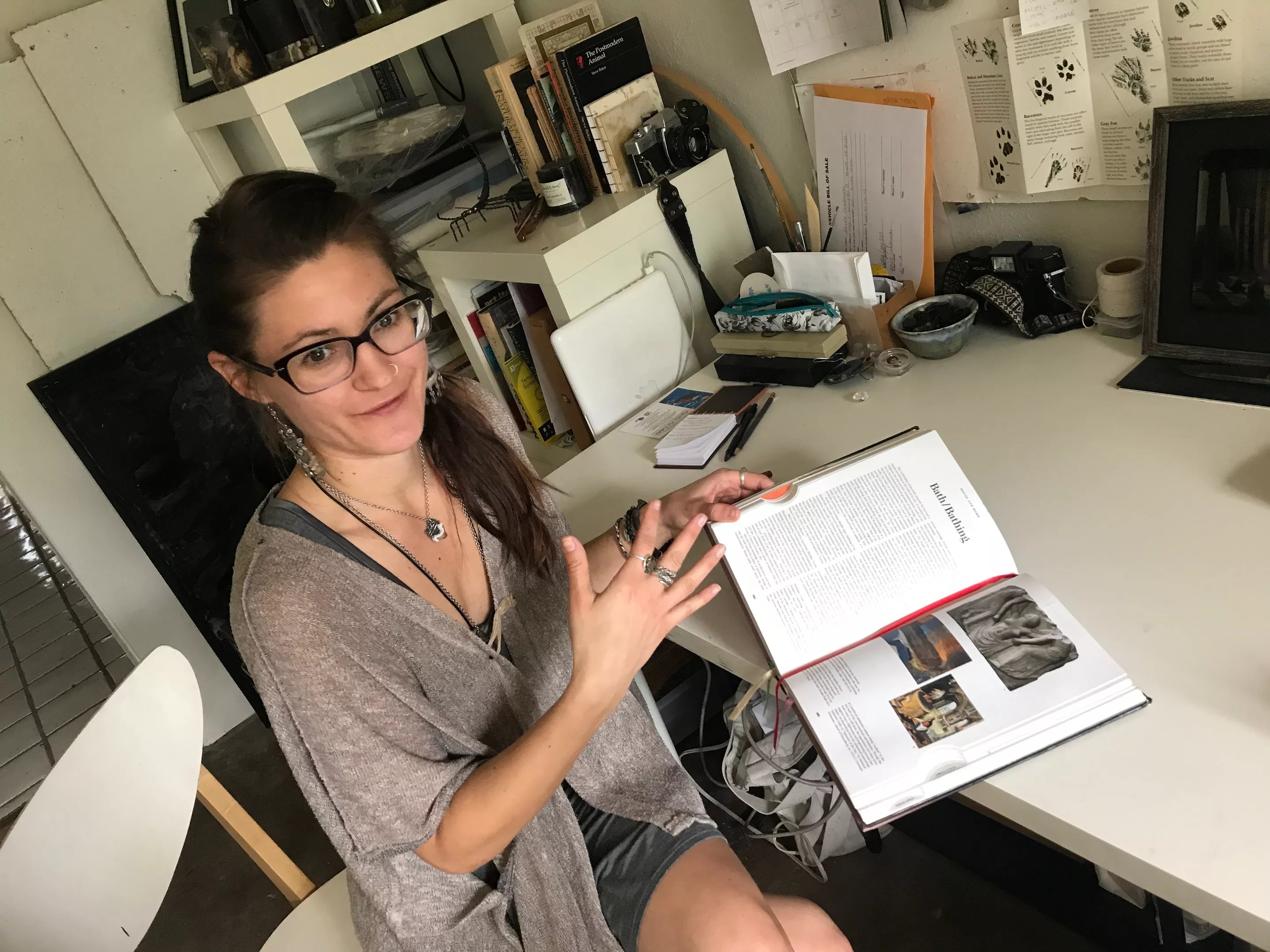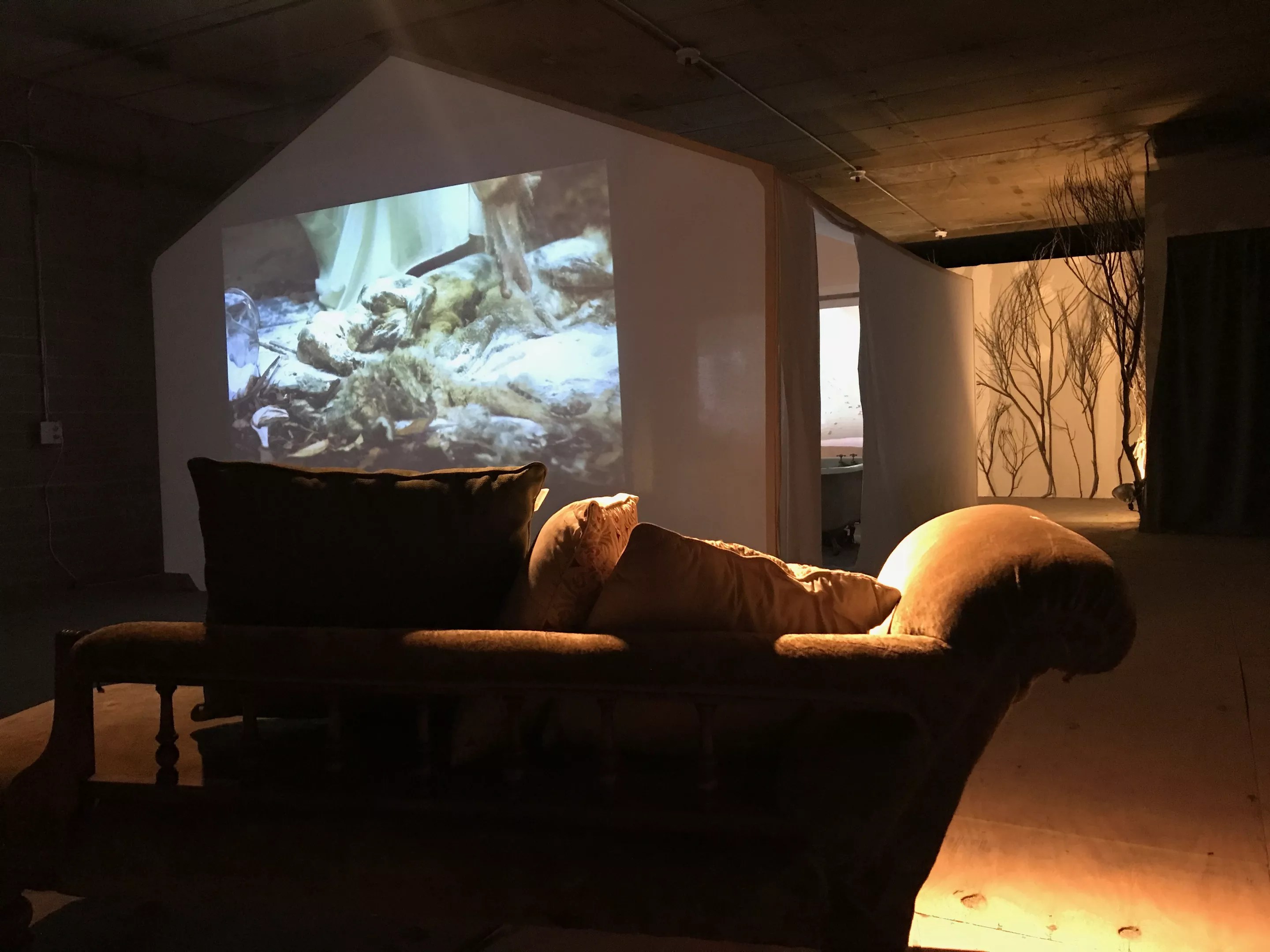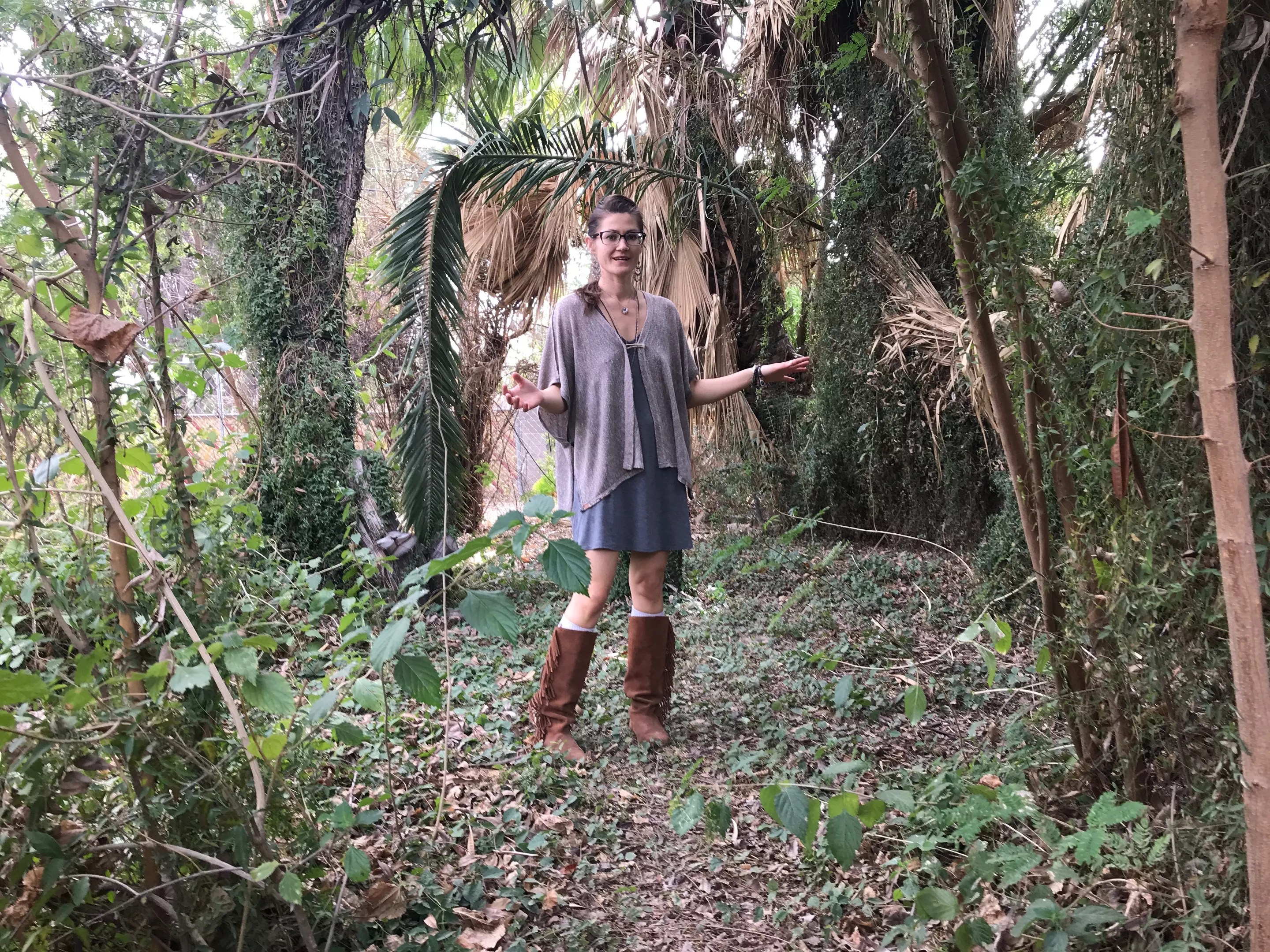
Lynn Trimble

Audio By Carbonatix
Artist Ashley Czajkowski stands inside a small room, surrounded by windowless brick walls. This downtown Phoenix space is the setting for her most recent pop-up exhibition, created in the aftermath of an unusual urban wildlife encounter.
A Victorian fainting couch, covered in golden crushed velvet fabric, sits nearby. On the other side of the space, two walls are lined with thin, dark branches set upright like trees, illuminated by light that casts their shadows on the wall.
The couch is a nod to conflicting human impulses toward domesticity and wild.
“Women in corsets used to recline when they couldn’t breathe, so it’s a way of representing domestic control,” Czajkowski says.
Phoenix, make your New Year’s Resolution Count!
We’re $11,000 away from reaching our $30,000 year-end fundraising goal. Your support could be what pushes us over the top. If our work has kept you informed, helped you understand a complex issue, or better connected you to your community, please consider making a contribution today.
The couch also signals Victorian-era developments that are critical to Czajkowski’s art practice.
“The Victorian era paralleled the beginning of photography and a boom in taxidermy,” she says. Photographic images of dead birds figure heavily in Czajkowski’s body of work.
The central piece for the show, called “Renascent,” is the form of a house that Czajkowski built in the space with wooden two-by-fours and oatmeal-colored muslin fabric. Inside the structure, there’s a claw-footed tub, and other artifacts used in making the installation.
Czajkowski projects three videos, all filmed in her backyard’s wooded setting, onto three of the structure’s walls. They take viewers through her process for gently, methodically working with an animal she found dead by the side of the road.
It’s been three years since Czajkowski found the coyote, apparently killed by a passing vehicle, along a busy strip of road near the Phoenix airport. She stopped to scoop it up, then took it home, knowing that one day it would become part of her art practice.

Part of Ashley Czajkowski’s “Renascent” installation.
Lynn Trimble
At the time, Czajkowski was in the master of fine arts program at ASU, often creating photographs and mixed-media pieces that centered around images of birds. For one particularly poignant video, she cast herself as a maternal figure for an owl, cradling the creature as if she might take it to her breast to nurse.
Czajkowski stored the coyote inside a large freezer, where it remained until last October, as the artist pondered how she could best honor the coyote’s life and help it transition through death. Ultimately, she gave the coyote a ritual bath, then spent three days skinning the animal.
Then she created a taxidermy-type form, using styrofoam for the base, and covering it with ceramic pieces adhered with bees wax. The sculpture became part of “Renascent” as well, and a durational performance in which Czajkowski reapplied ceramic pieces as they naturally fell from the object, signaling the coyote’s transformation and rebirth.
That’s where The Book of Symbols comes in. It’s a tome she calls “my artist’s Bible.” It’s filled with historical references to objects and rituals across cultures, and Czajkowski often uses it to inform her work. The book helped the artist explore various meanings and intentions often associated with practices such as bathing.
Czajkowski keeps the book atop her desk at her home studio in Tempe, where she has two white chairs facing a wall with a bulletin board that holds everything from home improvement store receipts to the X-ray image of a breast that she’s mulling how to use in a future project.
The studio has concrete floors, shelves dotted with natural objects housed in glass apothecary-like jars, and assorted tools Czajkowski uses in her work. It’s part of the home she shares with boyfriend and fellow artist Ryan Parra.

Ashley Czajkowski in her Tempe backyard, where she filmed the videos for her “Renascent” installation.
Lynn Trimble
Most importantly, the studio sits off the backyard. That’s where Czajkowski filmed her videos for “Renascent.” And it’s a constant reminder of her Kansas roots.
“So much of my work is rooted in my upbringing in a super rural community, where indoor and outdoor spaces are very fluid,” she says. It’s a fact that continues to affect the type of art she makes, and how she makes it.
Despite growing up in the Midwest, Czajkowski exhibits reverence for natural elements of the Southwest. “The desert has a certain spirituality,” she says.
The large evil-eye bead on one of Czajkowski’s many bracelets hints at her interest in witchcraft and pagan ritual, in which the natural world holds significant power. It’s another subtle thread that runs through much of her work
Clearly, Czajkowski’s art practice is evolving, as she explores new materials and techniques.
“I’m really interested in trail cam video, because of the idea of nature surveillance,” Czajkowski says. But she’s also intrigued by the way trail cam video changes the appearance of things through night vision technology. “I’m playing with some new ideas, using nineteenth century photo processes, layering, and projections.”
Soon, she’ll be preparing for an April exhibition at Eye Lounge. Odds are, it’ll continue to reveal her facility at exploring boundaries between the domestic and the wild.
“Renascent” is on view at 1017 North Central Avenue from 6 to 10 p.m. on Third Friday, February 16. See the Facebook event page for more information.